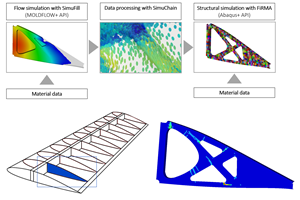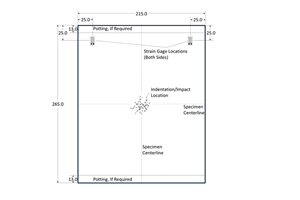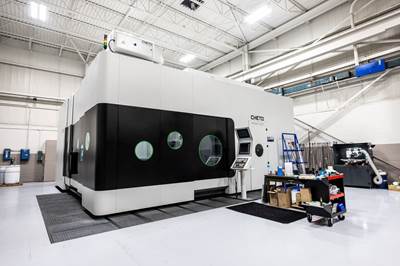Composite tooling specialist displays compression mold capabilities
CAMX 2024: Century Tool specializes in the in-house design, build and run-off of dimensionally large parts and Class A surface tooling.
Share
Century Tool (Fenton, Mich., U.S.), a Tooling Tech Group company and a composites tooling specialist, is highlighting its expertise in compression molds for composites. Century Tool provides design, build and run-off of tooling with a specialization in dimensionally large parts and Class A surface tooling for the automotive, aerospace, heavy truck, powersports and bath industries. The company provides molds for high-profile vehicles such as the Corvette, Jeep and Ford Bronco.
All Century Tool molds and tools are designed, engineered and manufactured in-house based on customer-supplied part data. Key to the effectiveness of the company’s tooling solutions is its high-speed precision machining capability with bed sizes of up to 343" long × 100" deep × 120" tall and the ability to machine molds of 100,000+ lbs. Additionally, the company maintains presses from 1,000-3,000 tons for both low-volume production and die tryout.
Century Tool says it can help companies achieve their lightweighting strategies by providing tooling capable of producing complex, aerodynamic shapes. As a vertically integrated company providing everything from design through try-out, tight control is maintained over quality to provide custom services to meet total program needs.
Related Content
-
ASCEND program completion: Transforming the U.K.'s high-rate composites manufacturing capability
GKN Aerospace, McLaren Automotive and U.K. partners chart the final chapter of the 4-year, £39.6 million ASCEND program, which accomplished significant progress in high-rate production, Industry 4.0 and sustainable composites manufacturing.
-
Aurora reveals latest SPRINT X-Plane design concept
An Aurora and Boeing team advances its high-speed, vertical lift concept to the preliminary design phase, which features three lift fans, a more refined composite exterior and an uncrewed cockpit.
-
Improving carbon fiber SMC simulation for aerospace parts
Simutence and Engenuity demonstrate a virtual process chain enabling evaluation of process-induced fiber orientations for improved structural simulation and failure load prediction of a composite wing rib.
Related Content
ASCEND program completion: Transforming the U.K.'s high-rate composites manufacturing capability
GKN Aerospace, McLaren Automotive and U.K. partners chart the final chapter of the 4-year, £39.6 million ASCEND program, which accomplished significant progress in high-rate production, Industry 4.0 and sustainable composites manufacturing.
Read MoreAurora reveals latest SPRINT X-Plane design concept
An Aurora and Boeing team advances its high-speed, vertical lift concept to the preliminary design phase, which features three lift fans, a more refined composite exterior and an uncrewed cockpit.
Read MoreImproving carbon fiber SMC simulation for aerospace parts
Simutence and Engenuity demonstrate a virtual process chain enabling evaluation of process-induced fiber orientations for improved structural simulation and failure load prediction of a composite wing rib.
Read MoreDamage tolerance testing of sandwich composites: The sandwich CAI test
A new ASTM-standardized test method established in 2022 assesses the compression-loaded damage tolerance of sandwich composites.
Read MoreRead Next
Corebon induction heating
This sidebar to CW’s August 2024 feature article reviews this technology for more efficient composites manufacturing and why it aligns with Koridion active core molding.
Read MoreCentury Tool investment boosts efficiency, capability in tooling for composites
Designer and builder of compression molds for composite structures installs seven-axis CNC deep-hole drilling and milling machine to improve productivity.
Read More“Structured air” TPS safeguards composite structures
Powered by an 85% air/15% pure polyimide aerogel, Blueshift’s novel material system protects structures during transient thermal events from -200°C to beyond 2400°C for rockets, battery boxes and more.
Read More







